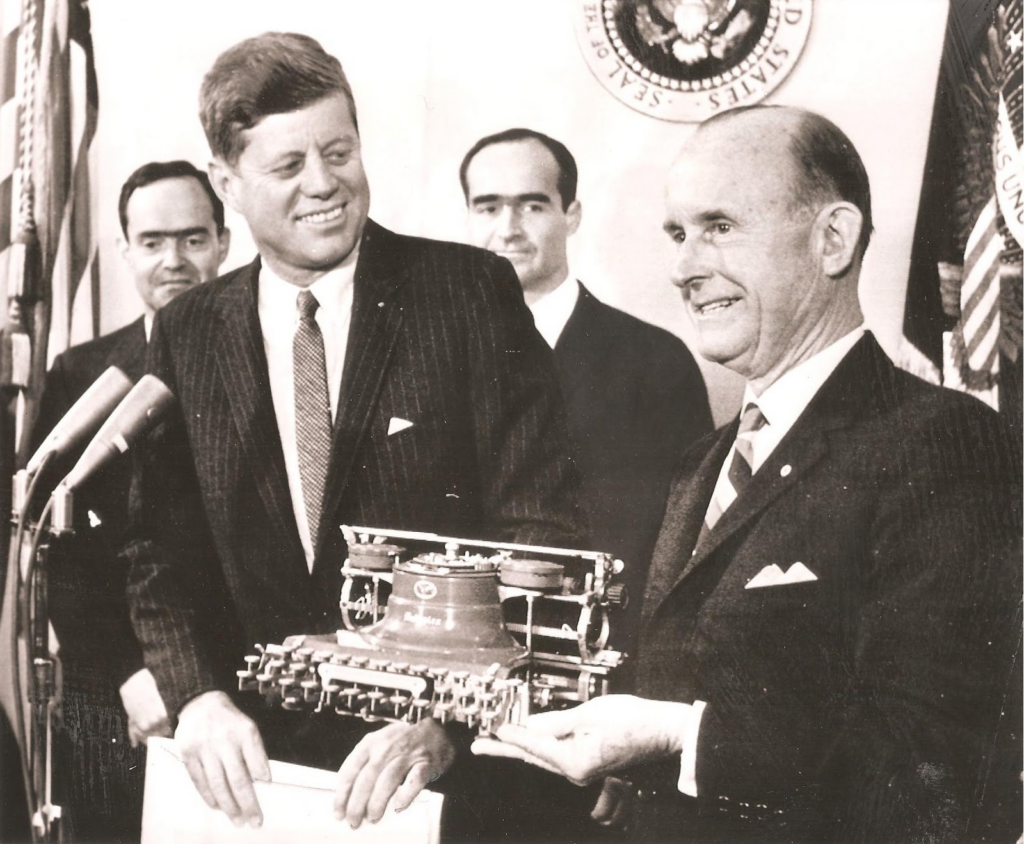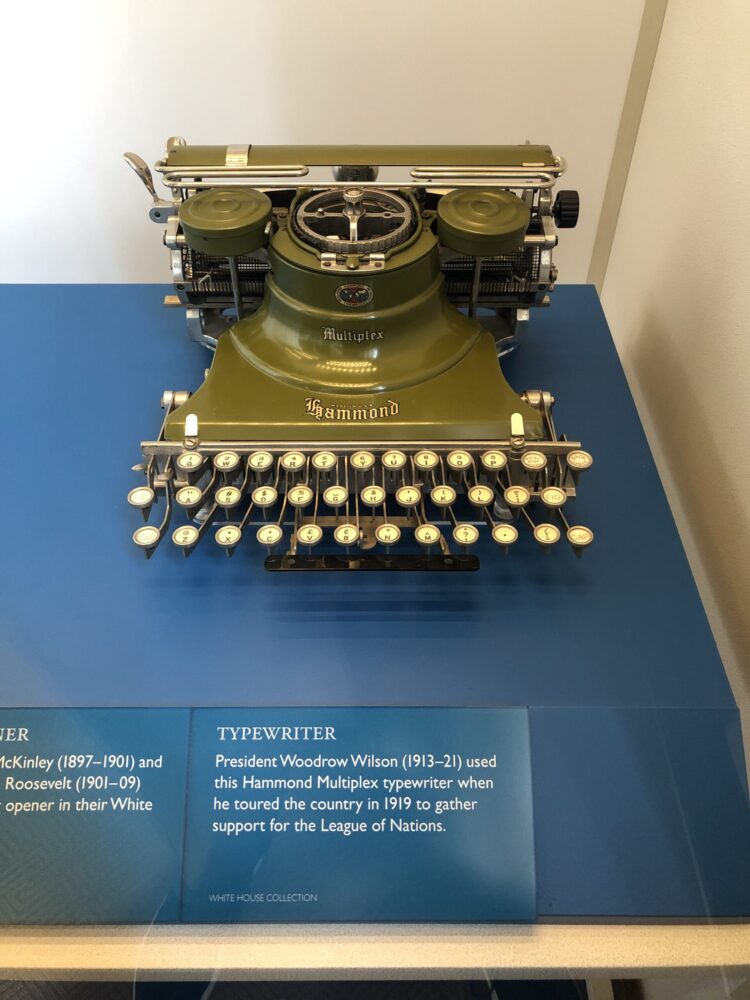
President Woodrow Wilson, 28th President of the United States from 1913 – 1921, owned several Hammond typewriters both as President of the United States, and President of Princeton University.

Wilson was intrigued by typewriters and he enjoyed using them, purchasing a Caligraph No. 2 in 1883. After eight years, however, he desired a change in machines. “As for typewriters,” he wrote Albert Bushnell Hart, a Professor of History in 1891:
“[T]his is a No. 2 Caligraph which I have been using since 1883 with not a little satisfaction. And yet, having my due share of human nature, I am not satisfied at all. I suspect the Hammond is a better machine for literary fellers,’ because of its variety of type and visible writing.”
One of the early challenges for typewriters was the issue of seeing what you typed as you typed it. As the inventor Henry Charles Jenkins put it in a paper to the Society of Arts in 1894:
“The Remington, Caligraph, Smith-Premier, Densmore, and Yost machines all have means by which the paper carrier or holder can be turned over upon some kind of hinge, and the writing, which has been performed under and out of sight, is brought into view. Operators get used to this, that they scarcely know how often they do it, but it must consume much time.”
These were sometimes referred to as blind writers and were produced cheaply, and in large numbers. The Hammond, however, was one of the first machines that made visible type a reality. It also had the benefit of interchangeable type which President Wilson would use considerably in both font, and language choices.
Wilson purchased his first Hammond, an Ideal No. 1 serial number 17,707 in 1893. It is believed that his first letter on it was to Winthrop More Daniels, friend and professor of political economy.
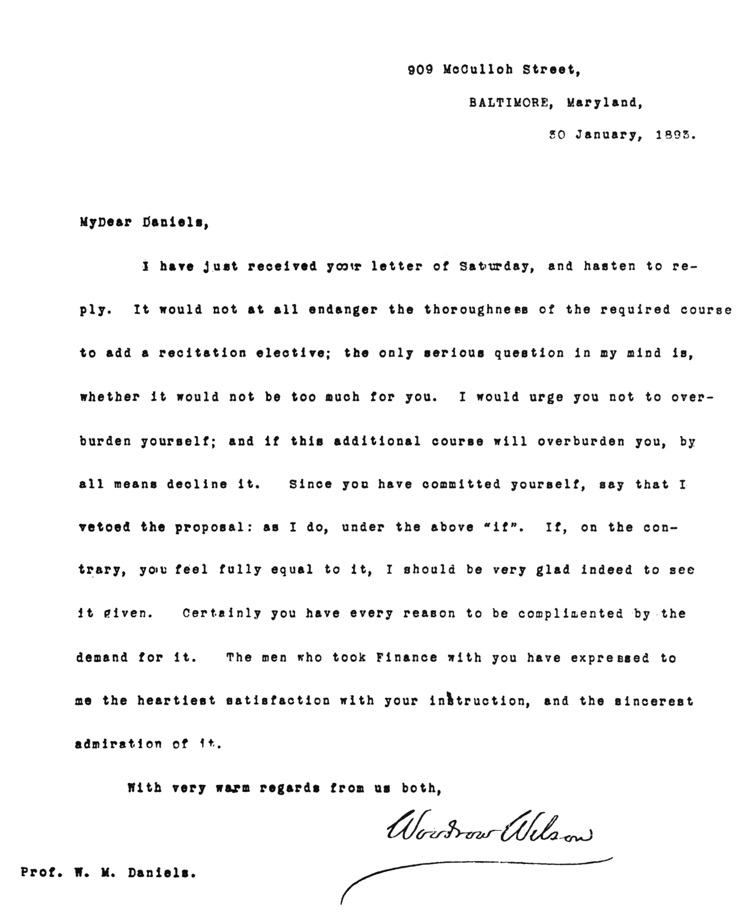
He then exchanged that model for an Ideal No. 2 in 1906, serial number unknown. These first two machines have been lost to history. In his former office at Princeton University there is a different No. 2 on display.
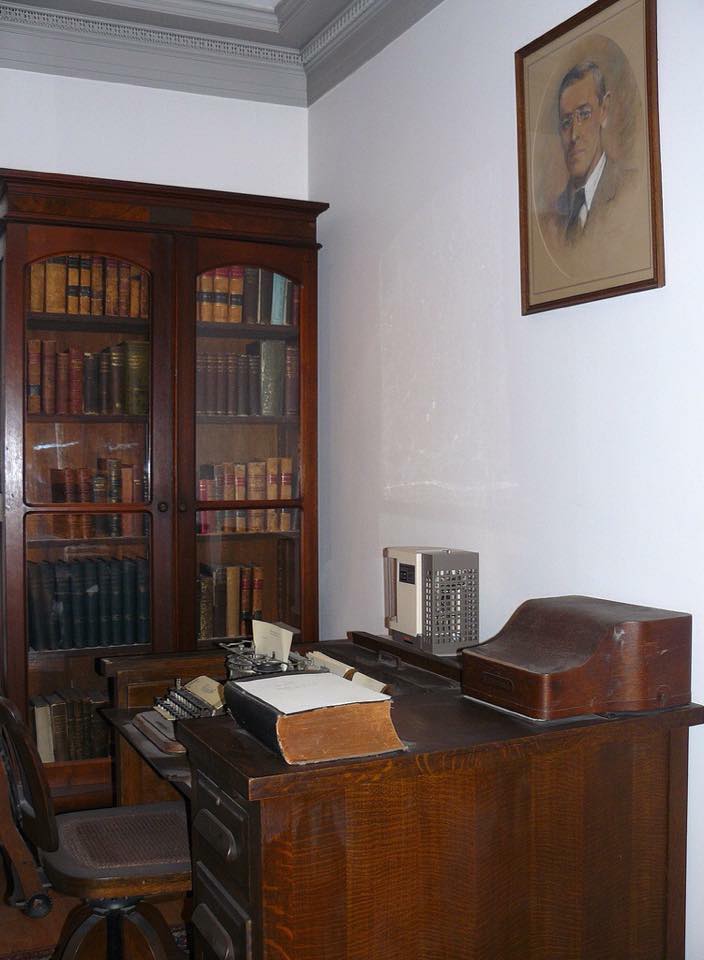
In the White House the President used a new,aluminum Ideal Multiplex that he would keep after leaving, serial number AL 111306, which is on display at his home in Washington, DC.

Serial number AL 111306
The company made sure the President was quite happy with his Hammond, as noted by this letter from Neal Down Becker, who would take over the company as President following Hamond’s death in 1913.
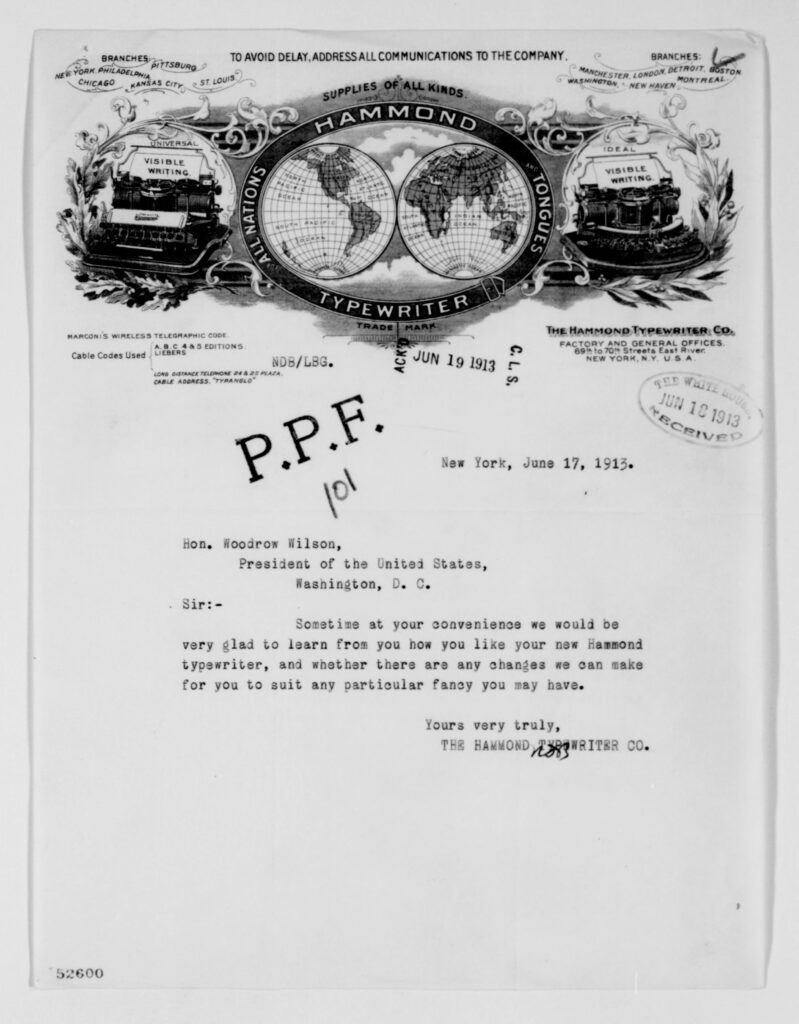
Wilson was especially delighted that he could change the font and language as needed. In a diary entry dated May 12, 1919, Wilson’s personal physician Dr. Cary Grayson noted that:
“After dinner the President brought in his little Hammond [Multiplex] typewriter in its case and put it on the table and resumed the work of framing his message to Congress. Before beginning he said: ‘I can change this key-board and can make it French, Italian or almost any other language. I do this by changing a bar of the type. However, all but English is barred.’ He said: “This message must of necessity be very short because I am leaving my real message until my return home so that I can deliver it in person.”
That machine is almost certainly this green aluminum Multiplex that Wilson upgraded to in 1919, serial number AL 206212. Coincidentally it was the same machine given by the President to Dr. Grayson.
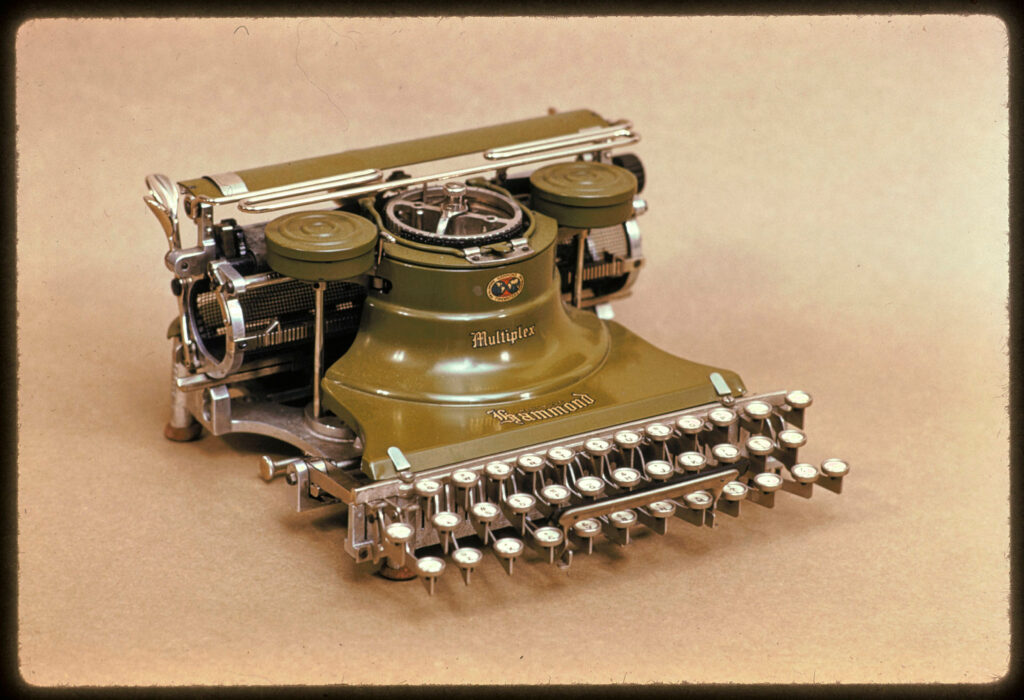
Dr. Grayson’s family would later donate it back to the White House Historical Society in 1962, where we can all see it to this day.
